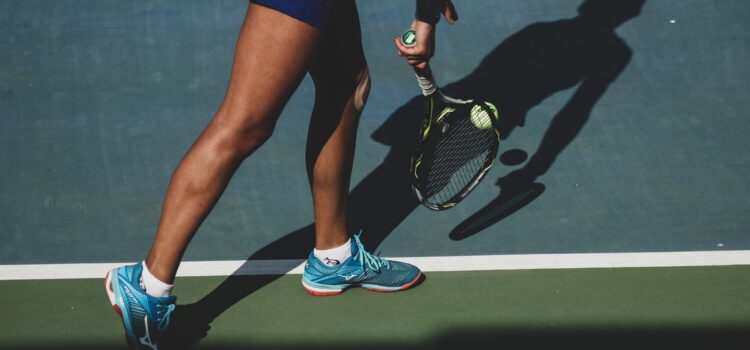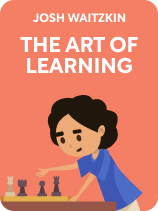

This article is an excerpt from the Shortform book guide to "The Art of Learning" by Josh Waitzkin. Shortform has the world's best summaries and analyses of books you should be reading.
Like this article? Sign up for a free trial here .
What is the key to mastering a skill? Should you focus on one technique or diversify your practice?
According to Joshua Waitzkin, the author of The Art of Learning, real skill comes from a deep, singular focus. In terms of skill-building, he argues that you reach excellence by refining a set of fundamental skills, rather than practicing a wide range of techniques. For example, focus on learning a single style of piano, like baroque classical, rather than trying to learn classical, jazz, and ragtime piano all at once.
Here’s how to master a skill, according to Waitzkin.
How to Master Any Skill
In his book The Art of Learning, American chess player Joshua Waitzkin explains how to master a skill; the key, he says, is to focus on one technique and practice it to perfection as opposed to switching between techniques. When you jump from technique to technique, you neglect to understand any of them beyond the surface level. According to Waitzkin, this leads to a wide-ranging but technically deficient skill set. Imagine learning five new piano chords daily—likely as not, you won’t grasp any of them deeply.
(Shortform note: In Range, David Epstein offers a counterargument to Waitzkin’s single-minded focus. He says cultivating a variety of skills gives you more flexibility in your career path; that it’s okay to find your path late in life; and that specialists end up siloed, or fixed in a particular way of thinking and acting. Epstein contends the modern world is an “unstable environment.” In other words, we can’t reliably predict what skills will remain useful, since things change so quickly. In contrast, chess and tai chi are stable environments—established games with unchanging rules—so focused practice works fine. But in unstable environments, learning widely can teach you transferable principles of learning that help you adapt to our complex world.)
Practice One Step at a Time
Waitzkin describes how he learned these fundamental skills from tai chi by slowly practicing one small movement at a time. For example, you might train a simple step forward, going slowly until the form becomes natural, like moving your hand an inch through the air.
He doesn’t say explicitly what these “fundamentals” are, but we’ve identified three techniques he uses to learn correct form:
- Deepen your awareness. Practice becoming present and moving your awareness around your body. Focus on how your body feels, and learn to move that awareness around internally.
- Relax tensions. When you’re learning to do something new with your body and mind, Waitzkin implies that there’s usually some resistance. In physical skills, your physiology—muscles, nerves, and so on—need to adapt to the unfamiliar form. In mental skills, you need to strain toward new connections, as we explained in Chapter 2. With both of these, presence helps you ease through the physical and psychological tension that precedes learning.
- Focus intensity. Once you’ve worked through resistance, the next step is to focus your energy into the new form. For example, you need to tense your muscles to properly develop them, or concentrate your mind on an idea to understand it.
Waitzkin implies that you need to cycle tension and relaxation to deepen your embodied understanding of a technique. The deeper you take it, the better you’ll be able to wield that technique in competition—it becomes smooth and instinctive.
When you deeply study a single skill, you develop a feeling for proper form. Though he doesn’t say this explicitly, we can infer that this is not mental understanding—it’s physical understanding. Reaching that feeling equips you to take on more advanced techniques.
To get to the feeling of proper form, rest your awareness in your body and gradually move through any resistance. Then, concentrate energy into the technique you’re practicing to build energy into it. For example, you might relax your shoulders to loosen them up, then practice tensing them to perform a pull-up.
This is like stretching: Gently ease through tension, moving toward what feels right. Gradually, you’ll develop that feeling of right form.
Consider “mountain” pose, a basic yoga posture. You stand with your feet together, flat on the floor; knees flexed but not locked, abs tightened slightly to support a straight spine; your shoulders resting back. You could spend hours deepening your embodied understanding of this pose: Feeling out just the right distribution of weight in your feet, just the right tension through your legs, just the right flex in your core. Eventually, you’ll reach a reliable feeling of “yes, this is right form.”
Waitzkin argues that once you’ve reached that feeling once, you can sense whether you’ve reached it with another technique. For example, a deep understanding of one yoga pose will help you develop any other, or a martial arts stance, push-ups, and so on.

———End of Preview———
Like what you just read? Read the rest of the world's best book summary and analysis of Josh Waitzkin's "The Art of Learning" at Shortform .
Here's what you'll find in our full The Art of Learning summary :
- Life advice from chess prodigy and tai chi World Champion Josh Waitzkin
- Detailed looks at the psychological and technical sides of skill-building
- How to build any skill from the bottom-up






